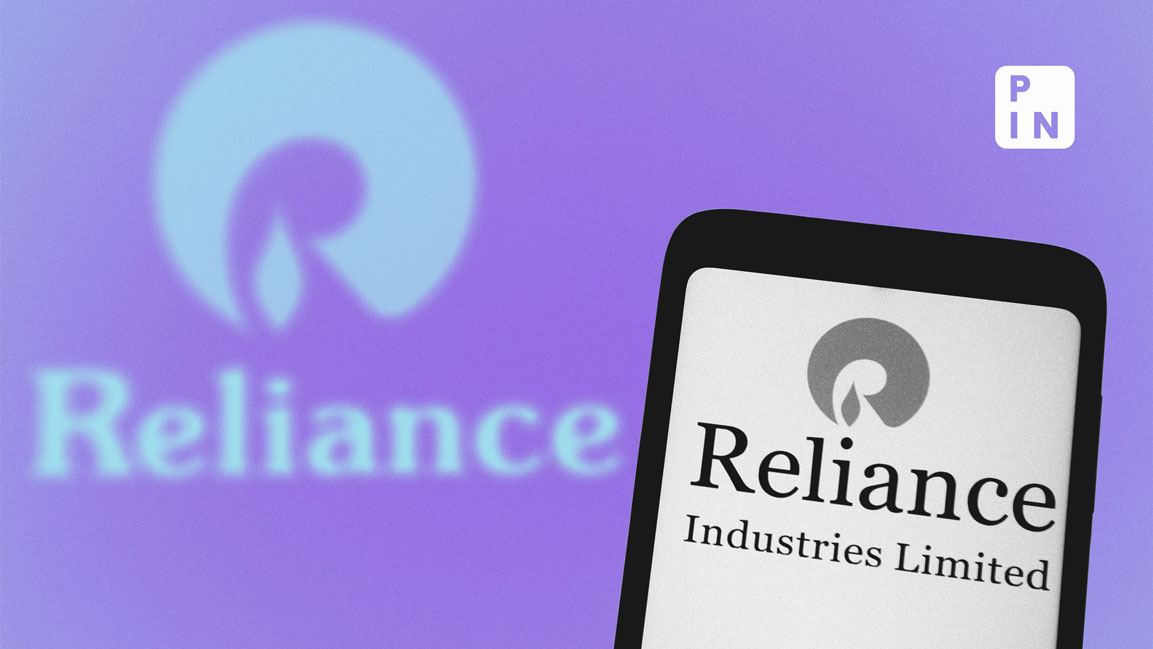- | 4:39 pm
Green business transparency is rising in India: CDP’s Borah
About 97% of Indian companies had board-level oversight for climate-related issues, indicating the seriousness with which climate crisis is treated, said Borah

More Indian companies are sharing information about their eco-friendly practices than before, said Prarthana Borah, country director of Carbon Disclosure Project (CDP), a nonprofit that helps businesses, investors, and local governments track and manage how they affect the environment. This shift is largely due to increasing demand from investors for more transparency about sustainability, she said in an interview. Edited excerpts:
How are Indian companies faring on CDP’s indicators when compared with those in the West?
Disclosures have evolved tremendously since the Paris Agreement in 2015, with the private sector in India showing positive interest and a steady growth of 20-30% every year. The rate of this growth has even jumped significantly in the last three years. This year, we reached out to 1,000 companies, getting more responses than before. While we have not announced the final figures, I can say the response has been much higher than previous years, and we are looking at many more companies disclosing to us in the coming years. We’re planning to expand our reach beyond just publicly traded companies. However, India is still far behind when compared with the US and Japan, where the number of disclosing companies in 2022 were 944 and 1,800 respectively.
Is it the carrot-and-stick approach at play, or are Indian firms spending voluntarily on climate change-mitigating causes?
There is no carrot-and-stick situation anymore. Indian companies have realized that addressing climate change is essential for smart business. Companies tell us that disclosures help in assessing risks and opportunities related to climate and other environmental changes, and this is becoming essential information for investors. Additionally, consumers are becoming more conscious of their product use and raising questions on operations adopted, supply chains and energy transition. To assess and report on how the company fares on the climate transition journey can also position it strongly against peers. As many as 57 Indian companies have set or committed to setting science-based targets. Many others have set renewable energy and energy efficiency targets. Indian businesses are also increasingly putting an internal price on carbon to meet their climate targets, with 25 already pricing carbon and 33 more planning to do so in the next two years, according to CDP reports. The PWC Annual Global CEO report says 60% of Indian companies are innovating new friendly products or processes as CEOs feel that their firms will not be economically viable a decade from now if they do not transform. Companies such as Adani Transmission Ltd, Wipro, Infosys, and Adani Green Energy have signed up for CDP’s supply-chain program in India and are connecting with strategic suppliers on climate change. These companies want suppliers to match ambitions, set emission reduction targets, and report progress.
The latest ministry of corporate affairs data show that CSR expenditure on the environment more than doubled in FY22 from a year ago to about ₹2,837 crore, with the sector emerging as the biggest recipient of such funds after healthcare and education. What is the reason for such a big jump last fiscal?
No comment
Data show Infosys emerged as the top spender on environmental causes at ₹157 crore, followed by ITC, Indian Oil Corp., IndusInd Bank, and Wipro. Infosys and Wipro also figured in the previous year’s list. Is there a pattern?
I would like to say that it is too early to predict a pattern if we investigate CDP data. Here is data for the past three years of A-list companies:

In terms of sectors that disclose, there is a diverse representation that we find. In 2022, many textile companies disclosed to CDP besides the regular hard-to-abate (those that use carbon as an integral part of their process) steel and cement companies. IT was the largest disclosing sector, but some financial institutions also disclosed. In 2023, we have had a jump in the number of financial institutions disclosing to us. What is important to reiterate here is that India, by its sheer numbers irrespective of sectors, does not just require more companies to disclose but also more companies to act and transition from C to B and B to A.
India has taken a vow to reach a non-fossil energy capacity of 500GW by 2030. At the current run rate, do you think we can reach the goal on schedule? What are the key hurdles that you expect?
According to the ministry of new and renewable energy, India appears to be on the right path since it is globally ranked 4th for its overall installed renewable energy capacity, and this has increased 286% in the past seven-and-a-half years. The government infused ₹1,500 crore ($180 million) in the Indian Renewable Energy Development Agency. However, if we go into details at the micro level, in 2022, the 122 companies that disclosed in India reported a total of 195 terra watt hours (TWh) of electricity consumption out of which about 18 TWh was renewable energy. This is just 9% of the total electricity consumption, which is not enough. In 2021, renewable energy use went up by 4% compared to 2020. Last year, out of 271 TWh of total energy used, 13 TWh was from renewable sources, making up 5% of the total. A total of 47 companies have identified transition opportunities towards low carbon energy usage in 2021 when compared with 34 companies in 2020.
The challenge lies in engaging the supply chain in the renewable energy transition, where technology and finance will be a major factor. Big companies can help here by working closely with their suppliers. Data shows that 60% of Indian companies are already sharing knowledge with their suppliers. This is a chance to focus not just on sharing information but also on helping with technology and money for clean energy.
Do you reach out to MSMEs (micro, small and medium enterprises) on incorporating climate-conscious business strategies? How effective have they been so far?
Data based on data generated from 37 MSMEs, which are enrolled with CDP for the supply chain program, show that one-third have set climate targets aligned with operations, and a little more than one-tenth have signed up for science-based target setting. About one-third have initiated emission reduction initiatives and have been using renewable energy. About 22% have further engaged with suppliers to accelerate their action towards climate and sustainability.
The major challenge with MSMEs is that there is no proper framework or guidelines for MSMEs when it comes to sustainability reporting/ disclosure frameworks. CDP has recently started working on a disclosure framework for SMEs, which is being discussed for applicability to Asia. We hope to roll out SME disclosures next year.
Do you see investors stepping away from sustainability in the wake of current geopolitical events, global economic concerns, and market pressures? Will climate concerns take a back seat in such a scenario?
On the contrary, in 2022, over 680 investors across the globe, with assets of over $130 trillion, requested 18,700+ companies to disclose to them through the CDP platform, a 233% increase since 2015 when the Paris Agreement was signed. About 40% of these have an interest in Indian companies. While Indian financial institutions need to drive climate action locally, there were about 11 Indian investors being signatories with CDP in India and who use the environmental data collected by us as a base to inform their lending decisions. However, we are seeing an increase in investor interest on climate data, and this is likely to increase further with local policy developments such as the Reserve Bank of India’s (RBI’s) climate risk assessment paper, which is a step in introducing climate risk assessment by RBI.
Refinitiv data show more than $400 billion of new funds were raised in the green capital markets in 2020 in India, which includes $357.5 billion from sustainability bonds and $76.5 billion from green bonds.
A recent article in The Wall Street Journal said “E” and “S” in ESG are about serving political agendas on climate and social issues. How would you respond?
Companies are increasingly using annual data reports to guide their business plans. This helps them avoid risks and grow. For example, in 2022, Indian companies reported that climate risks could cost them $34 billion but also bring opportunities worth $375 billion.
In the same year, most companies said they faced real-world climate risks such as floods or droughts. For example, financial companies reported the biggest risk, with $10.3 billion at stake, mainly due to risky loans. More and more companies are also putting someone in charge of climate issues at the board level.
A recent survey by Deloitte India found that climate change is a top concern for Indian companies. More than half of the Indian executives polled see it as a high priority, which is higher than the global average. While politicians debate, more people in India are becoming aware that climate change is a real problem.
A Bloomberg article recently pointed out that ‘governance’ often outweighs ‘environmental’ and ‘social’ factors in ESG scoring. Do you believe there should be distinct rankings for ‘E’ and ‘S’ to give them more importance?
CDP’s ‘governance and strategy’ module in the climate questionnaire reflects how sustainability and decarbonization are integrated at the management level. All factors in ESG are interlinked. Governance plays a crucial role as it indicates how effective is the regulatory framework/leadership within any organization. Best governance practices can reduce risk for investors and improve financial performance.
In 2022, out of 122 companies reporting through CDP India, 97% had board level oversight of climate-related issues (an increase of 35 companies against 2021) and 80% have at least one board member with competence on climate-related issues. As many as 82% of the companies are reporting to the board on at least a quarterly basis on climate-related issues.
CDP India began in 2012. After 10 years, there are just 122 companies that disclose environmental data to CDP?
This number is not low because it focuses on the big players in the market. Until now, we looked at the top 200 companies listed on BSE. Starting in 2023, we’ll expand to the top 1000 companies, covering 80% of the market.
Do all the polluting companies/sectors figure in this list of 122 companies? What are the primary inhibitions of those that do not report on sustainability, climate change, and the environment?
No. We try to create a scientific methodology that can create checks and balances so companies through our stringent and detailed questionnaires cannot greenwash. However, we do not do the verification ourselves and encourage third-party verification that we may not always have control over. We try to reach everyone in our sample to disclose. The numbers are constantly rising and soon all companies will join. It is a matter of time.
Where do you think India lacks in sustainability? Or what are the problem areas that you have come across, and how does CDP plan to address these challenges?
Disclosure is driven by transparency that allows a company to evaluate its own risks from environmental impact. It also helps look at opportunities and create a business case for addressing climate/water and deforestation issues. However, in the past few years while Scope1 (direct emissions from the company) has decreased, Scope 2 (indirect emissions from electricity use) remained constant Scope 3 has escalated. Assessment of Scope 3 (all other indirect emissions, such as from suppliers) emissions especially in the value chain is complex for a country like India, where millions of small industry is involved in the business process be it upstream or downstream. In case of supply chain, disclosure capacity can be an issue as can be finance and technical know-how. Environment reporting with disclosures can only be successful through multi-partner support and an internal need for companies to want to be transparent in looking at the benefits of disclosures.













